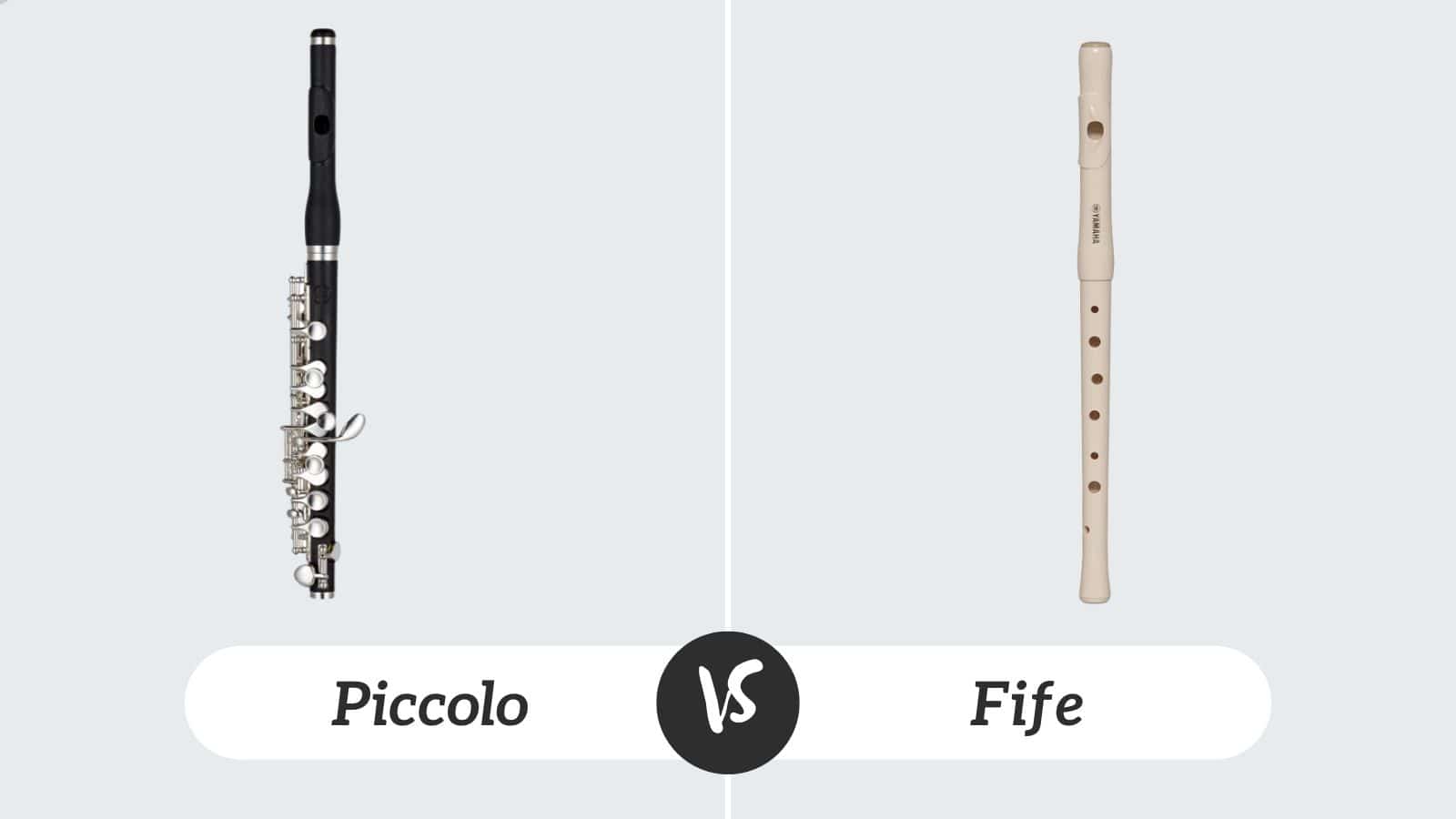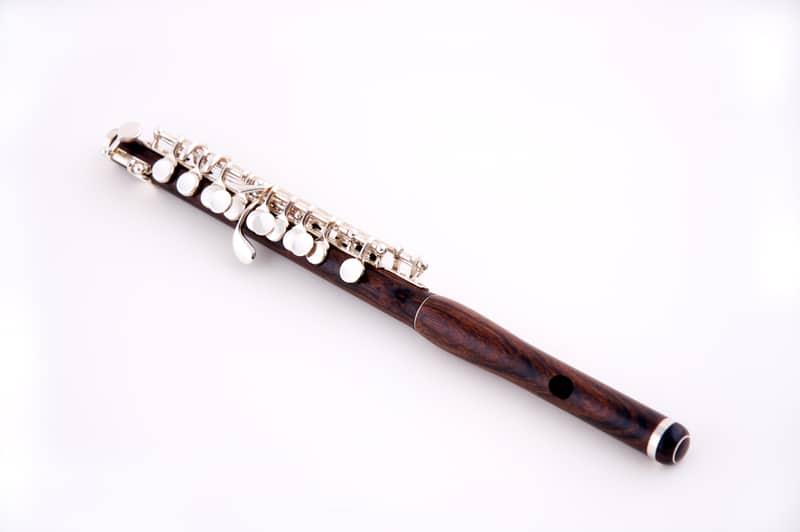
Most people are familiar with the concert flute, but what they may not know is that the flute family actually contains a number of different instruments, which span a broad range of sizes, timbres, and uses.
Two such instruments are the piccolo and the fife, which both appear as small flutes. Though these instruments have several similarities, they are not quite the same and are often found in different contexts.
Piccolo vs Fife
What is a fife?
The fife is a wind instrument that is in the shape of a small flute. However, the fife actually predates the flute, originating in twelfth century Europe.
This instrument was typically used in medieval times for folk music or in military bands, and was known for being particularly loud and high-pitched. The fife continues to be used in these contexts, though it is rarely, if ever, used in modern orchestras.
Fifes are typically made out of wood, though the type of wood can vary. A traditional fife typically has six finger hole openings, which does not allow it to play all twelve harmonic pitches or in every key.
Modern fifes may have additional holes in order to offset this issue. Fifes are most commonly pitched in the key of A-flat, though there are many versions that are pitched in C or D as well.
It is a relatively difficult instrument to produce sound on, but with practice a performer can play a range of three octaves, the same range as a modern flute but an octave higher. However, fifers are very rarely asked to play in the first octave.
What is a piccolo?
Today, it is much more common to come across a piccolo than a fife. Like a fife, the piccolo is akin to a small flute. The piccolo first appeared as early as the Baroque era, and followed the same structure as a Baroque flute.
In the nineteenth century, modern flutes began to change, adapting the Boehm system. This allowed the flute to have a larger and better sound as well as more technical flexibility.
Piccolos followed suit at the end of the nineteenth century; however, unlike flutes, they continued to be made of wood rather than metal. Some metal and plastic piccolos exist today, but wood is still the most common.
The piccolo is pitched in C, but sounds an octave higher than written (and an octave higher than its flute counterpart). It is now a keyed instrument and can play all chromatic pitches within a three octave range.
It is a very common instrument in all wind ensembles, and has become more and more frequent in orchestral literature through the centuries. Most orchestras now employ a piccolo player, though he or she will also play flute frequently.
Some comparisons
| Fife | Piccolo | |
|---|---|---|
| Size | About 15.5 inches The fife is slightly over half the size of the flute and slightly bigger than the piccolo; its length causes it to sound nearly an octave higher and to be pitched in the key of A-flat. | About 13 inches The piccolo is half the size of the flute, and slightly smaller than the fife. Like the flute, it is pitched in C and sounds exactly one octave higher. |
| Range | 2-3 octaves The fife technically has a range of 3 octaves, but the lower octave is nearly never used, as it is difficult to play and hear. | 3 octaves The piccolo has a range of 3 octaves, and all 3 octaves are utilized, although the higher octaves are what the instrument is best known for. |
| History | Medieval/12th century The fife dates back to medieval times, when it was frequently played in military bands or folk groups. The first known fifes date to twelfth century Europe. | Baroque era/17th century or 19th century (modern Boehm) The piccolo was used in some Baroque and early Classical literature, but in its original form. The modern piccolo dates to the late nineteenth century, after the adoption of the Boehm system. Piccolos are seen more frequently in orchestral literature from the nineteenth century on. |
| Appearance | Keyless, wood Fifes are traditionally made of wood. They have six finger holes, and therefore cannot play all the chromatic pitches in tune, and thus can only play in certain keys. Modern fifes have some adaptations; some might have ten or eleven tone holes, while others may use one key to cover the E-flat finger hole. | Keyed, wood and other materials Piccolos are typically made of wood, though they can be made of plastic or metal as well. Piccolos are keyed instruments, which means that every finger hole is covered by a key that must be pressed down by a finger. This allows the instrument to play all twelve chromatic pitches and in any key. |
| Timbre | High-pitched, shrill A fife is known and used for the purpose of being loud, high, and shrill. It is said that fifes can be heard from a great distance, though up close may be somewhat unpleasant. High-pitched, wooden A piccolo is known for being loud and high-pitched, though there has been an increasing exploration in modern music of the quieter colors and lyrical capabilities of the piccolo. It also has a slightly different timbre than the flute, largely due to being made of wood. | |
| Intonation | Difficult Traditional six-holed fifes are notoriously difficult to tune, especially in certain keys. Some improvements have been made to modern fifes to combat intonation issues, but the performer must still be diligent with tuning at all times. | Difficult The piccolo is known for being difficult to tune. Many people use alternate fingerings or frequently adjust the headjoint position to mitigate intonation problems within ensembles. |
| Context | Military bands and folk music Today, fifes are most commonly heard in military bands. Fifes are also used in traditional folk music, particularly in Celtic music and in the Caribbean. | Orchestra, wind ensemble, and solo music Today, piccolos are frequently heard in bands/wind ensembles and orchestras. Most groups have specific piccolo positions. There is also an increasing amount of solo repertoire written for the instrument. |
While one instrument is more modern than the other, both instruments have a rich history, unique sound, and important purpose. Discover some patriotic or folk music to hear more of the fife, or head to your local symphony to hear the piccolo in action!

